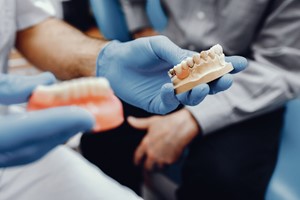Robotic-assisted knee replacement surgery with laser technology is garnering attention as a groundbreaking advancement in orthopaedic care. With its array of benefits for patients and surgeons alike, this cutting-edge approach is transforming the landscape of knee surgeries.
In an interview, Dr. Anush Rao, Specialist Orthopaedic Surgeon at Aster Clinic Umm Al Quwain, emphasised the significance of non-invasive treatments for early stages of knee osteoarthritis.
He said that conservative measures encompass lifestyle modifications, weight reduction, and targeted muscle strengthening exercises, including hamstring and quadriceps. “The next step in non-invasive treatment includes options such as oral supplements, Platelet Rich Plasma (PRP)/stem cell therapy, viscosupplement injections, and steroid injections into the knee joint,” he said.
He added that one of the key advantages of robotic knee surgery with laser technology lies in its speedy post-operative recovery. “The minimally invasive nature of the procedure involves minimal tissue handling, leading to less post-operative pain. Remarkably, patients can often walk immediately after the surgery and are typically discharged within two to three days. This accelerated recovery not only improves patient satisfaction but also eases the burden on hospital resources by freeing up much-needed beds,” he explained.
Another benefit of robotic guided knee replacement is that it is significantly faster than conventional methods. “With the assistance of robotic devices, surgeons can conduct accurate preoperative planning and receive real-time on-screen information on the patient’s knee anatomy and kinematics during the surgery. This increased efficiency has reduced the overall surgery duration by approximately 15 minutes, enhancing the patient's experience,” stated Dr. Rao.
Additionally, the incorporation of robotic devices in knee replacement surgery has multiple benefits that considerably reduce the strain on operating surgeons. Dr. Rao said: “The robots provide live on-screen information on the patient’s knee anatomy and kinematics, leading to a high level of accuracy with minimal surgical errors.”
The procedure’s precise nature contributes to a smaller surgical scar length, minimal tissue dissection, and reduced blood loss. These factors, combined with accurate bone cuts, knee
deformity correction, and optimal implant positioning, contribute to a lower likelihood of nerve injury, iatrogenic fractures, and infections, ultimately leading to less revision surgery.
Robotic-assisted knee surgery with laser technology is a versatile approach that can effectively treat various knee conditions, such as severe osteoarthritis of the knee with deformities; severe osteoarthritis with ligamentous instability, previously failed total knee surgeries due to improper implant positioning or infection; revision total knee arthroplasties with or without bone loss as well as secondary osteoarthritis due to previous injuries.
According to the expert, robotic-assisted knee surgery with laser technology heralds a new era in orthopaedic care.
“With its non-invasive nature, reduced recovery time, enhanced surgical precision, and improved patient outcomes, this innovative approach is poised to revolutionise knee surgeries, providing patients with a higher quality of life and faster return to mobility,” he added.













